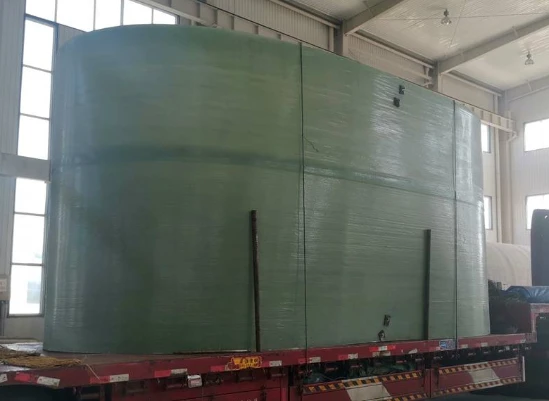
-
 Afrikaans
Afrikaans -
 Albanian
Albanian -
 Amharic
Amharic -
 Arabic
Arabic -
 Armenian
Armenian -
 Azerbaijani
Azerbaijani -
 Basque
Basque -
 Belarusian
Belarusian -
 Bengali
Bengali -
 Bosnian
Bosnian -
 Bulgarian
Bulgarian -
 Catalan
Catalan -
 Cebuano
Cebuano -
 China
China -
 China (Taiwan)
China (Taiwan) -
 Corsican
Corsican -
 Croatian
Croatian -
 Czech
Czech -
 Danish
Danish -
 Dutch
Dutch -
 English
English -
 Esperanto
Esperanto -
 Estonian
Estonian -
 Finnish
Finnish -
 French
French -
 Frisian
Frisian -
 Galician
Galician -
 Georgian
Georgian -
 German
German -
 Greek
Greek -
 Gujarati
Gujarati -
 Haitian Creole
Haitian Creole -
 hausa
hausa -
 hawaiian
hawaiian -
 Hebrew
Hebrew -
 Hindi
Hindi -
 Miao
Miao -
 Hungarian
Hungarian -
 Icelandic
Icelandic -
 igbo
igbo -
 Indonesian
Indonesian -
 irish
irish -
 Italian
Italian -
 Japanese
Japanese -
 Javanese
Javanese -
 Kannada
Kannada -
 kazakh
kazakh -
 Khmer
Khmer -
 Rwandese
Rwandese -
 Korean
Korean -
 Kurdish
Kurdish -
 Kyrgyz
Kyrgyz -
 Lao
Lao -
 Latin
Latin -
 Latvian
Latvian -
 Lithuanian
Lithuanian -
 Luxembourgish
Luxembourgish -
 Macedonian
Macedonian -
 Malgashi
Malgashi -
 Malay
Malay -
 Malayalam
Malayalam -
 Maltese
Maltese -
 Maori
Maori -
 Marathi
Marathi -
 Mongolian
Mongolian -
 Myanmar
Myanmar -
 Nepali
Nepali -
 Norwegian
Norwegian -
 Norwegian
Norwegian -
 Occitan
Occitan -
 Pashto
Pashto -
 Persian
Persian -
 Polish
Polish -
 Portuguese
Portuguese -
 Punjabi
Punjabi -
 Romanian
Romanian -
 Russian
Russian -
 Samoan
Samoan -
 Scottish Gaelic
Scottish Gaelic -
 Serbian
Serbian -
 Sesotho
Sesotho -
 Shona
Shona -
 Sindhi
Sindhi -
 Sinhala
Sinhala -
 Slovak
Slovak -
 Slovenian
Slovenian -
 Somali
Somali -
 Spanish
Spanish -
 Sundanese
Sundanese -
 Swahili
Swahili -
 Swedish
Swedish -
 Tagalog
Tagalog -
 Tajik
Tajik -
 Tamil
Tamil -
 Tatar
Tatar -
 Telugu
Telugu -
 Thai
Thai -
 Turkish
Turkish -
 Turkmen
Turkmen -
 Ukrainian
Ukrainian -
 Urdu
Urdu -
 Uighur
Uighur -
 Uzbek
Uzbek -
 Vietnamese
Vietnamese -
 Welsh
Welsh -
 Bantu
Bantu -
 Yiddish
Yiddish -
 Yoruba
Yoruba -
 Zulu
Zulu
Jan . 14, 2025 10:57
Back to list
grp grating
GRP grating, or glass reinforced plastic grating, has emerged as a game-changer in industries where durability, safety, and maintenance are paramount. In situations where metal grating may corrode or heavy materials are impractical, GRP grating stands out as a superior alternative. This article breaks down the essential attributes of GRP grating, offering insights into its applications, benefits, and considerations, fortified by real-world experiences and expert evaluations.
The longevity of GRP grating facilitates its portrayal as an economical choice. Despite higher initial costs compared to traditional materials, the reduced need for maintenance and replacements curtails long-term expenses. An engineer from a major water treatment facility shares their experience “Switching to GRP grating was strategic. Our maintenance team has noted the reduced upkeep needed — the investment has paid for itself over five years due to decreased replacement and labor costs.” In terms of customization, GRP grating offers unmatched versatility. It can be crafted in various shapes, sizes, and colors to meet the specific requirements of any project. It is also available in different fibrous configurations, catering to specific strengths and rigidity demands. A construction manager affirms that this adaptability has allowed their projects to meet both aesthetic and functional design criteria without compromise. When considering the transition to GRP grating, potential users should evaluate the specific environmental conditions and mechanical stresses likely to be encountered by the grating. Consulting with suppliers and field experts will ensure selection of an appropriate resin type and design configuration, optimizing the grating for its intended purpose. In conclusion, the application of GRP grating promises enhanced safety, durability, and cost-effectiveness across various high-stress environments. Its proven track record of reducing maintenance costs and improving safety standards provides authoritative evidence of its value. Incorporating GRP grating is a forward-thinking strategy that aligns with industry-wide shifts toward sustainable and low-maintenance solutions, reinforcing trust and confidence in its capabilities from both users and experts.


The longevity of GRP grating facilitates its portrayal as an economical choice. Despite higher initial costs compared to traditional materials, the reduced need for maintenance and replacements curtails long-term expenses. An engineer from a major water treatment facility shares their experience “Switching to GRP grating was strategic. Our maintenance team has noted the reduced upkeep needed — the investment has paid for itself over five years due to decreased replacement and labor costs.” In terms of customization, GRP grating offers unmatched versatility. It can be crafted in various shapes, sizes, and colors to meet the specific requirements of any project. It is also available in different fibrous configurations, catering to specific strengths and rigidity demands. A construction manager affirms that this adaptability has allowed their projects to meet both aesthetic and functional design criteria without compromise. When considering the transition to GRP grating, potential users should evaluate the specific environmental conditions and mechanical stresses likely to be encountered by the grating. Consulting with suppliers and field experts will ensure selection of an appropriate resin type and design configuration, optimizing the grating for its intended purpose. In conclusion, the application of GRP grating promises enhanced safety, durability, and cost-effectiveness across various high-stress environments. Its proven track record of reducing maintenance costs and improving safety standards provides authoritative evidence of its value. Incorporating GRP grating is a forward-thinking strategy that aligns with industry-wide shifts toward sustainable and low-maintenance solutions, reinforcing trust and confidence in its capabilities from both users and experts.
Next:
Related Products









